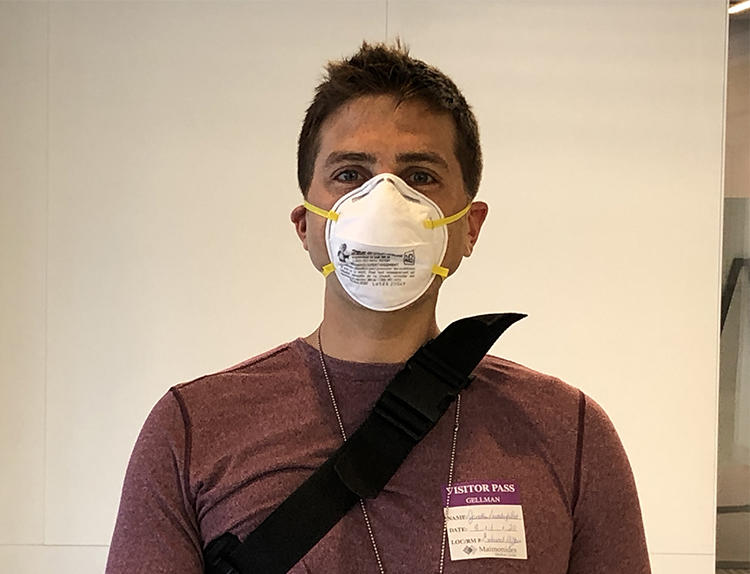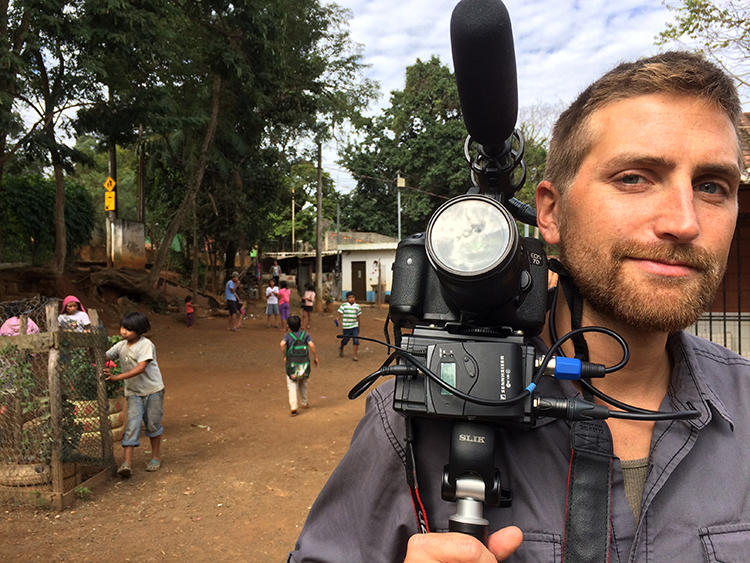In early March, Jon Gerberg was in Detroit, Michigan, covering the Democratic primaries as a video journalist with The Washington Post. But as the COVID-19 virus has spread in the United States and around the world, Gerberg’s coverage has changed to focus on the pandemic.
In recent stories Gerberg, who is based in Washington, D.C., reported on testing labs hindered by supply shortages and on how Americans struggling with addiction are fighting to stay sober while practicing social distancing. He is now reporting on the pandemic from New York City.
While Gerberg has experience with stressful changing reporting environments from his time covering the wars in Iraq and Afghanistan, the nature of the pandemic has presented new reporting challenges.
CPJ spoke with Gerberg in an email interview on March 26, 2020. His replies have been edited for length and clarity.
How has the pandemic affected your work on a daily basis? Are you still covering your usual beat?
It has changed everything. [Three] weeks ago I was just back from Detroit after covering two intense weeks of the Democratic primaries and turning my attention to some long-term reporting projects. Now it feels like that’s all gone out the window.
For my beat as a video journalist, I already cover a wide range of national and international stories, but it does feel like the current pandemic will at least inform every story I do, in some way, for a while.
I think we’re going to be covering this story, tracing its impacts, and learning its lessons for a long time.
On the practical level, it also means a lot more Slack and video conferences to communicate with editors and colleagues.
What are you doing to keep yourself safe?
I’m taking a number of safety measures — some practical and others technical.
First of all, we are much more discerning with the stories we do cover as well as how we cover them. We ask ourselves: What is the risk in reporting this story? How important of a story is it? And is there a safer way to get it?
When I do decide to take on an assignment, I take a number of precautions. On a practical level there are a lot of common sense steps you can take to make sure that you aren’t putting yourself and others unnecessarily at risk. Know the situation before you go into it. Are there people known or expected to be exposed to coronavirus in the location you are going? Do you have a realistic game plan to get where you need to go and meet with your subjects in a safe and secure environment?
Once I’m in the field I maintain my distance from all other humans and animals. I try for at least 10 feet. I use directional microphones and telephoto lenses so that I can film from farther away. This does kind of go against the old photographer’s adage that “if your photos aren’t good enough, you’re not close enough.” But these are special times and we have to get creative.
I wear gloves, mask and other protective equipment when necessary. I also pack only enough gear that I can keep it all on my person. My trusty fanny pack definitely helps. This is so that I don’t have to put anything on the ground or other contaminated surfaces. I try to do as much filming outside as possible. And I try to stand perpendicular to the wind when I am interviewing someone, so that neither of us are inadvertently ‘blowing’ our germs onto the other.
Finally, I wipe down all my gear with anti-bacterial wipes before and after every shoot. When I get home I have a staging area on my porch where I remove all external clothes, put them right in a trash bag and into the laundry.
All this might seem extreme, but just like in covering conflicts and other disasters, we have to be concerned not just for our own well-being, but for the safety of everyone we may come into contact with. It’s the very least we can do for the people that are taking the time to share their stories with us. It’s a responsibility we should never take lightly.

What are your greatest obstacles and concerns in your current coverage?
Safety is the number one concern. But beyond that, I think we have to be concerned with focusing on the stories that matter and reporting them in ways that inform the public and communicate crucial, even life-saving information. It’s hard to overstate how much is on the line when reporting in a moment like this—a global pandemic where, according to experts, millions of lives could be at stake. At the same time, I think we need to be careful not to overhype or cause hysteria with stories that are alarmist or not fully reported.
One huge obstacle is access and proximity. It’s similar to covering wars where you might be stuck, for security reasons, in a fortified compound in Kabul or Baghdad but you are responsible for covering developments in far-flung provinces with little communication or reliable, verifiable information. In both of these circumstances, I think we have to rely on good old reporting techniques — developing sources, obtaining primary documents, verifying and corroborating the information and material we are getting, in order to tell a full and reliable story.
How do you keep your sources safe when communicating digitally?
Encrypted communication tools are really helpful with that—and there is no shortage of encrypted communication tools out there. Signal is a great one.
And you can use these to send photos and video as well as text. You can use other security protocols like PGP encryption and Virtual Private Networks to establish secure communication.
How would you rate U.S. authorities’ openness and accessibility for journalists covering the crisis?
I don’t know if I can actually ‘rate’ the openness in general. I think many authorities have tried to be forthcoming and get public information out there whenever possible. But they also have other priorities right now. That doesn’t make the information any less important. And that’s where I think we come in as journalists. My colleagues at the Post, for instance, were able to obtain internal emails from the New York State Department of Health that shed better light on their response plans and readiness.
What worries me is when official channels are actively working to obscure or misrepresent information at this crucial time, where lives are on the line.
How are you dealing with misinformation around the virus?
I just think we have to do our job as journalists and be vigilant in our fact-checking and confirmation. The stakes are too high to get this story wrong.
Since most of us are not epidemiologists or medical professionals, we have to be honest with ourselves and our audience about what we do and do not know. By exercising humility in the questions we ask and the facts we report, we can provide the most honest accounting possible of the situation—and avoid making over-zealous mistakes.
